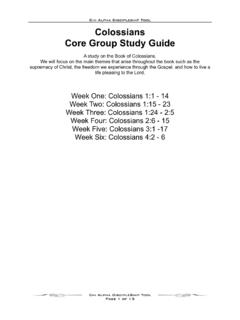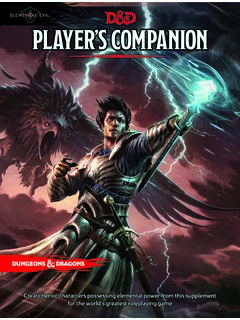Transcription of Care of the Adolescent: 12 yrs - 18 yrs A - Baptist Health
1 AGE-SPECIFIC COMPETENCIES FOR HEALTHCARE PROVIDERS care OF THE adolescent (12 YEARS 18 YEARS) 1 care of the adolescent : 12 yrs - 18 yrs dolescence is the period of development between childhood and adulthood. Most experts indicate that this period of development exists from about 12-18 years; some experts say that adolescence lasts from 11 years through 20-21 years. Adolescence is specific to human development. No other animal, even the other primates, go through adolescence to the same extent as humans. This time period between puberty and the attainment of adult status is something that is uniquely human. Adolescence lasts approximately 8 years, and is required for the development of the complex social skills needed by adults.
2 It is a unique period of human development that is characterized by rapid physical, emotional, mental, and social growth and development. Adolescence is further divided into: Early adolescence (11-13) Middle adolescence (13-16) Late adolescence (16-20) Depending on the individual, the adolescent period can continue until approximately 21 years of age. Stage 5A AGE-SPECIFIC COMPETENCIES FOR HEALTHCARE PROVIDERS care OF THE adolescent (12 YEARS 18 YEARS) 2 VITAL SIGNS Temperature: F- F (oral/tympanic); F (rectal) Heart Rate: Average 75-85 (girls) Average 70-80 (boys) Respirations: 15-20/minute Blood Pressure: 115 19 / 59 10 Pulse rate and respiratory rates decrease during this stage of development.
3 Blood pressure increases slightly to approximately 120/70 mmHg. BP becomes slightly higher in males than females as they approach adulthood because more pressure is needed to circulate blood to the larger, more muscular male body. HEIGHT & WEIGHT Physiologic growth is rapid during this stage of development. Most girls are 1-2 inches taller than boys as they enter adolescence. Girls continue to grow until about 3 years after the first menstrual period (menarche), so a girl who starts menstruating at age 11 may stop growing by age 14. During adolescence, boys generally grow 4-12 inches and gain 15-65 pounds. Girls usually grow 2-8 inches and gain approximately 15-55 pounds. More children are obese than ever before.
4 It is difficult for obese teenagers to smoothly transition through adolescence when their self-esteem is affected by their weight. Education is important to help these teens deal with weight issues. Referral to dieticians and adherence to diets of 1800 calories per day may be helpful. AGE-SPECIFIC COMPETENCIES FOR HEALTHCARE PROVIDERS care OF THE adolescent (12 YEARS 18 YEARS) 3 HEAD-TO-TOE ASSESSMENT Adolescents usually do not present to healthcare professionals for a physical exam unless they are ill, injured, or they are being examined for athletic clearance. It is important for adolescents to provide their Health histories away from their parents, if possible. Adolescents are more apt to give an accurate history away from their parents.
5 Parents may be hesitant to allow this procedure, but encourage the parent and the adolescent that it is part of promoting independence and self- care . TEETH Adolescents develop their second molars at around age 13 and their third molars (wisdom teeth) anywhere between 18 and 21 years. Some adolescents who develop their wisdom teeth before their jaws are fully grown, may need to have these teeth extracted to make room for their other teeth. SKIN Acne is a self-limiting inflammatory disease involving the sebaceous glands that empty into hair follicles. It can be devastating to the teenager who is struggling with self-identity, self-image, and self-worth. An increase in androgen in both genders during puberty causes the sebaceous glands to become more active.
6 As sebum is trapped in the narrow gland ducts, white heads begin to develop, followed by black heads, and finally inflamed papules. Treatments vary from topical to systemic, depending on the severity. Medical care should be obtained for the adolescent s physical and emotional Health and well-being. AGE-SPECIFIC COMPETENCIES FOR HEALTHCARE PROVIDERS care OF THE adolescent (12 YEARS 18 YEARS) 4 CARDIOVASCULAR SYSTEM Blood flow and oxygen supply are reduced somewhat during adolescence since the heart and lungs develop more slowly than the rest of the body. Insufficient energy and fatigue may occur when the adolescent engages in some activities. Fatigue may be normal in the adolescent , but it is always a good idea to suggest that the teen receive a medical exam if fatigue becomes problematic to rule out other causes.
7 SEXUAL DEVELOPMENT Puberty is the period of adolescence during which the secondary sex characteristics develop fully. Body hair under the arms (axilla), around the pubic area, and the inner aspect of the thighs develops. The female pelvis increases in the transverse diameter, breasts develop, and menstruation begins. Males experience an increase in testosterone, with subsequent deepening of the voice, growth of facial hair, and enlargement of the external genitalia. The adolescent may be self-conscious about being examined. When performing a physical exam, expose only the part of the body being examined. For young girls, place the stethoscope under the gown to listen for breath sounds and heart sounds. Exposure of the chest is usually not necessary unless a breast exam must be performed.
8 PAIN ASSESSMENT AND MANAGEMENT The management of pain is essential in all age groups. Explain the 0-10 pain scale as you would for an adult. 0 means no pain and 10 means the worst pain one could ever have. Provide analgesics as ordered, and carefully monitor the adolescent s pain relief and response to the medication. AGE-SPECIFIC COMPETENCIES FOR HEALTHCARE PROVIDERS care OF THE adolescent (12 YEARS 18 YEARS) 5In the initial assessment, document the level that the adolescent describes as a fraction. For example, if the post-op patient describes his or her incisional pain as a 7 on the 0-10 scale, document: Post-op pain level = 7/10. After the medication has been administered, reassess the patient s vital signs (T,P,R, & BP) along with his or her pain level (the 5th vital sign).
9 If the patient states the pain is now a 2 on the 0-10 scale, document: Post-op pain level = 2/10. By using fractions to document pain level, other healthcare providers can easily interpret if the pain medication intervention was successful or not. Describing relief as somewhat better or slightly improved does not have the impact as stating that the pain dropped from a 7/10 to a 2/10 after medication. Encourage participation so the adolescent has an increased sense of control and independence. Pain impulses are perceived more quickly when compounded by anxiety. Teach the adolescent that pain can be controlled and that s/he should inform the nurse of pain before it becomes intolerable. In addition, pain management should not differ from one healthcare provider to the next.
10 A pain management tool and interventional plan should be used so consistent pain management is achieved no matter who is providing care to the adolescent patient. COGNITIVE GROWTH & DEVELOPMENT The adolescent begins the final stage of cognitive development around the age of 12. More abstract thinking is possible. Abstract and logical thinking allows for problem solving abilities. AGE-SPECIFIC COMPETENCIES FOR HEALTHCARE PROVIDERS care OF THE adolescent (12 YEARS 18 YEARS) 6 The adolescent is capable of creating what if scenarios in order to make choices. The adolescent begins to be successful in using the scientific method in order to solve problems. Math and scientific problems become less difficult to solve once the adolescent can think in the abstract.






